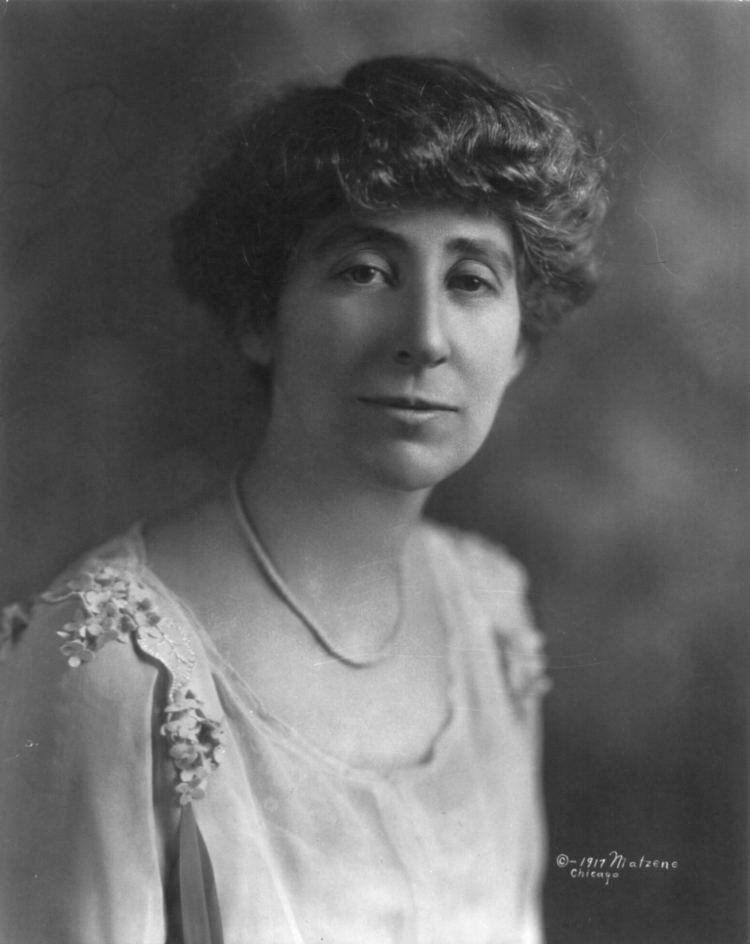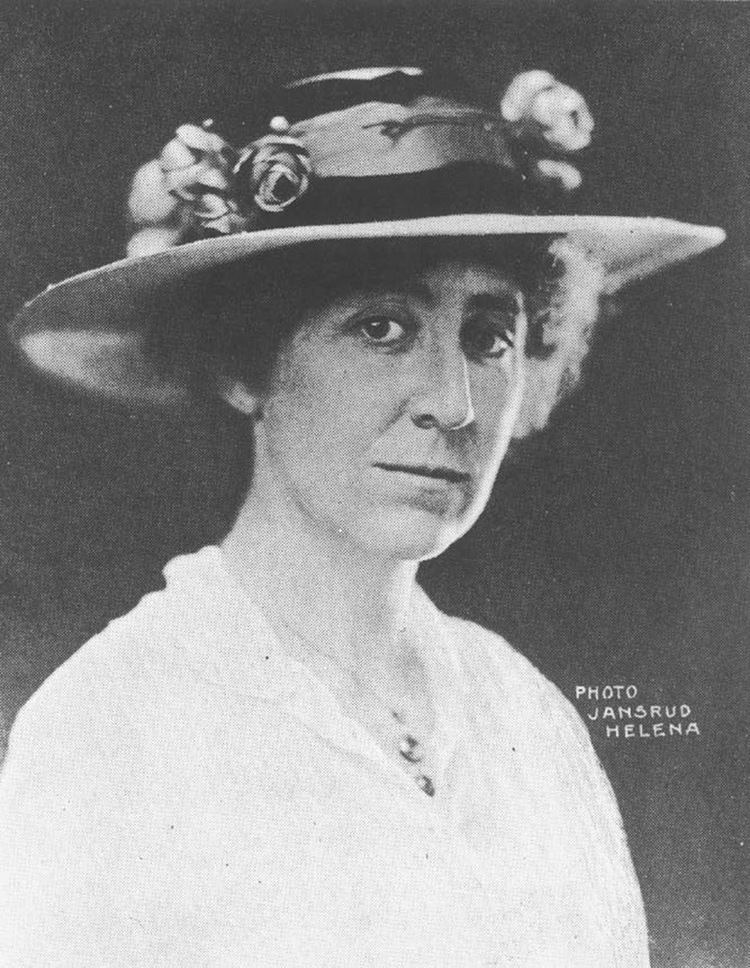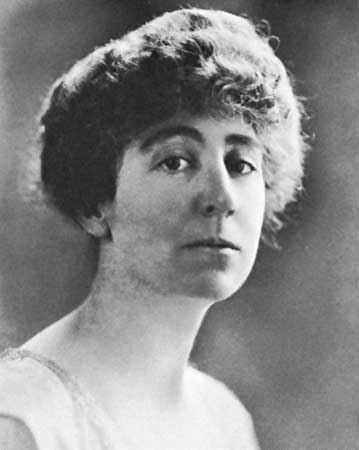Name Jeannette Rankin | Political party Republican Party Republican Party | |
 | ||
Succeeded by District abolishedPat Williams after district re-established in 1993 Full Name Jeannette Pickering Rankin Alma mater University of MontanaUniversity of Washington Role Member of the U.S. Congress Died May 18, 1973, Carmel-by-the-Sea, California, United States Similar People Frances Perkins, Margaret Sanger, Susan B Anthony, Abigail Adams | ||
C span cities tour congressional papers of jeannette rankin
Jeannette Pickering Rankin (June 11, 1880 – May 18, 1973) became the first woman to hold a high government office in the United States when, in 1916, she was elected to the United States Congress from the state of Montana. After winning her House seat in 1916, she said, "I may be the first woman member of Congress but I won’t be the last." She also was elected in 1940.
Contents
- C span cities tour congressional papers of jeannette rankin
- Jeannette rankin first female congresswoman was republican
- Early life and suffrage movement
- First congressional term
- Between terms
- Second congressional term
- After Congress
- Death and legacy
- In popular culture
- References

Rankin's two terms in Congress coincided with U.S. entry into both World Wars. A lifelong pacifist, she was one of 56 members of Congress (including 50 in the House) who voted against entry into World War I in 1917, and the only member of Congress to vote against declaring war on Japan after the attack on Pearl Harbor in 1941.

Jeannette rankin first female congresswoman was republican
Early life and suffrage movement
Rankin was born on June 11, 1880 near Missoula, Montana, nine years before the territory became a state, to schoolteacher Olive Pickering and Scottish-Canadian immigrant carpenter and rancher John Rankin. She was the eldest of six children, including five girls (one of whom died in childhood) and one brother, Wellington, who would become the state's attorney general, and later, an associate justice of the Montana Supreme Court.
As an adolescent, Rankin cleaned, sewed, and helped care for her younger siblings, in addition to sharing in the outdoor work and daily farm chores. She helped maintain the ranch machinery, and once single-handedly built a wooden sidewalk for a building owned by her father so that it could be rented. Rankin later recorded her childhood observation that while women of the 1890s western frontier labored side by side with the men as equals, they did not have an equal political voice—nor a legal right to vote.

Rankin graduated from high school in 1898, and from the University of Montana in 1902 with a Bachelor of Science degree in biology. With no clear career ambitions, she first tried dressmaking in Missoula, and then furniture design in Boston, where she lived while her brother attended Harvard. She also turned down several marriage proposals.
At the age of 28 Rankin moved to San Francisco to take a job in social work. Confident that she had found her calling, she enrolled in the New York School of Philanthropy in New York City (later part of Columbia University) from 1908 to 1909. She then moved to Spokane, Washington where, after briefly serving as a social worker, she attended the University of Washington and became involved in the women's suffrage movement. She helped organize the New York Women's Suffrage Party and worked as a lobbyist for the National American Woman Suffrage Association (NAWSA). In November 1910, Washington voters approved an amendment to their state constitution permanently enfranchising women, the fifth state in the Union to do so.
In February 1911, Rankin became the first woman to speak before the Montana legislature, making her case for women's suffrage. In November 1914, Montana passed a similar amendment granting women unrestricted voting rights. Rankin later compared her work in the women's suffrage movement to the pacifist foreign policy that defined her congressional career. She believed, with many suffragists of the period, that the corruption and dysfunction of the United States government was a result of a lack of feminine participation. As she said at a disarmament conference in the interwar period, "The peace problem is a woman’s problem."
First congressional term
Rankin's campaign for one of Montana's two at-large House seats in the congressional election of 1916 was financed and managed by her brother Wellington, an influential member of the Montana Republican Party. The campaign involved traveling long distances to reach the state's widely scattered population. Rankin rallied support at train stations, street corners, potluck suppers on ranches, and remote one-room schoolhouses, and won by over 7,500 votes to become the first female member of Congress.
Shortly after her term began, Congress was called into an extraordinary April session in response to Germany's declaration of unrestricted submarine warfare on all Atlantic shipping. On April 2, 1917, President Woodrow Wilson, addressing a joint session, asked Congress to "make the world safe for democracy" by declaring war on Germany. After intense debate, the war resolution came to a vote in the House at 3 o'clock in the morning on April 7; Rankin cast one of fifty votes in opposition. "I wish to stand for my country," she said, "but I cannot vote for war." Years later, she would add, "I felt the first time the first woman had a chance to say no to war, she should say it." Although 49 men joined her in voting against the declaration, Rankin was singled out for criticism. Some considered her vote to be a discredit to the suffragist movement and to her authority in Congress, but others applauded it, including Alice Paul of the National Woman's Party and Representative Fiorello LaGuardia of New York.
On June 8, 1917, the Speculator Mine disaster in Butte left 168 miners dead, and a massive protest strike over working conditions ensued. Rankin intervened, but mining companies refused to meet with her or the miners, and proposed legislation was unsuccessful.
By 1918, women had been granted some form of voting rights in about forty states, but Rankin became a driving force in the movement for unrestricted universal enfranchisement. In January 1918 she opened congressional debate on a Constitutional amendment granting universal suffrage to women. The resolution passed in the House and was defeated by the Senate, but in 1919 a similar resolution passed both chambers. After ratification by three-fourths of the states, it became the Nineteenth Amendment to the United States Constitution. Her affirmative vote on the original House resolution made Rankin, as she later noted, "... the only woman who ever voted to give women the right to vote."
During Rankin's term, the Montana state legislature voted to replace the state’s two at-large seats with two separate districts, and Rankin found herself in the overwhelmingly Democratic western district. With little chance of retaining her House seat after the reapportionment, she opted to run for the Senate in 1918. After losing the Republican primary to Oscar M. Lanstrum, she accepted the nomination of the National Party, and finished third in the general election behind incumbent Democrat Thomas J. Walsh and Lanstrum.
Between terms
In 1924, Rankin bought a small farm in Georgia where she lived a spartan existence without electricity or plumbing. She made frequent speeches around the country on behalf of the Women's Peace Union and the National Council for the Prevention of War. In 1928 she founded the Georgia Peace Society, which served as headquarters for her pacifism campaign until its demise in 1941, on the eve of World War II.
She also worked as a field secretary for the National Consumers League, and as a lobbyist for various pacifist organizations. She argued for the passage of a Constitutional amendment banning child labor, and supported the Sheppard–Towner Act, the first federal social welfare program created explicitly for women and children. The legislation was enacted in 1921 but repealed just eight years later.
Second congressional term
Rankin won election to the House once again in 1940, at the age of 60, defeating incumbent Jacob Thorkelson, an outspoken antisemite, in the July primary, and former Representative Jerry J. O'Connell in the general election. She was appointed to the Committee on Public Lands and the Committee on Insular Affairs. While members of Congress—and their constituents— had been debating the question of U.S. intervention in World War II for months, the attack on Pearl Harbor on December 7, 1941 galvanized the country and silenced virtually all opposition.
On December 8, Rankin was the only member of either house of Congress to vote against the declaration of war on Japan. Hisses could be heard in the gallery as she cast the vote; several colleagues, including Rep. (later Senator) Everett Dirksen, asked her to change it to make the resolution unanimous—or at very least, to abstain—but she refused. "As a woman I can't go to war," she said, "and I refuse to send anyone else."
After the vote, a crowd of reporters pursued Rankin into a cloakroom, where she was forced to take refuge in a phone booth until Capitol Police arrived to escort her to her office. There, she was inundated with angry telegrams and phone calls, including one from her brother, who said, "Montana is 100 percent against you." A UPI photo of Rankin sequestered in the phone booth, calling for assistance, appeared the following day in newspapers across the country. While her action was widely ridiculed in the press, William Allen White, writing in the Kansas Emporia Gazette, acknowledged her courage in taking it:
Probably a hundred men in Congress would have liked to do what she did. Not one of them had the courage to do it. The Gazette entirely disagrees with the wisdom of her position. But Lord, it was a brave thing! And its bravery someway discounted its folly. When, in a hundred years from now, courage, sheer courage based upon moral indignation is celebrated in this country, the name of Jeannette Rankin, who stood firm in folly for her faith, will be written in monumental bronze, not for what she did, but for the way she did it.
Two days later, a similar war declaration against Germany and Italy came to a vote; Rankin abstained. Her political career effectively over, she retired in 1942 rather than face near-certain re-election defeat. Asked years later if she had ever regretted her action, Rankin replied, "Never. If you're against war, you're against war regardless of what happens. It's a wrong method of trying to settle a dispute."
After Congress
Over the next twenty years Rankin traveled the world, frequently visiting India, where she studied the pacifist teachings of Mahatma Gandhi.
In the 1960s and 1970s a new generation of pacifists, feminists, and civil rights advocates found inspiration in Rankin, and embraced her efforts in ways that her own generation had not. The Vietnam War mobilized her once again. In January 1968, the Jeannette Rankin Brigade, a coalition of women's peace groups, organized an anti-war march in Washington, D.C.—the largest march by women since the 1913 woman suffrage parade. Rankin led the five thousand participants from Union Station to the steps of the Capitol Building, where they presented a peace petition to House Speaker John McCormack of Massachusetts. Simultaneously, a splinter group of activists from the women's liberation movement created a protest within the Brigade's protest by staging a "Burial of True Womanhood" at Arlington National Cemetery to draw attention to the passive role allotted to women as wives and mothers. In 1972, Rankin—by then in her nineties—considered mounting a third House campaign to gain a wider audience for her opposition to the Vietnam War, but longstanding throat and heart ailments forced abandonment of that final project.
Death and legacy
Rankin died on May 18, 1973, age 92, in Carmel, California. She bequeathed her estate, including the property in Watkinsville, Georgia, to help "mature, unemployed women workers". The Jeannette Rankin Foundation (now the Jeannette Rankin Women's Scholarship Fund), a 501(c)(3) nonprofit organization, awards annual educational scholarships to low-income women 35 and older across the United States. Beginning with a single 500-dollar scholarship in 1978, the fund has since awarded more than $1.8 million in scholarships to more than 700 women.
A statue of Rankin, inscribed "I Cannot Vote For War", was placed in the United States Capitol's Statuary Hall in 1985. At its dedication, historian Joan Hoff-Wilson called Rankin "one of the most controversial and unique women in Montana and American political history". A replica stands in Montana's capitol building in Helena.
Although her legacy rests almost entirely on her pacifism, Rankin told the Montana Constitutional Convention in 1972 that she would have preferred otherwise. "If I am remembered for no other act," she said, "I want to be remembered as the only woman who ever voted to give women the right to vote."
In popular culture
In 2004 peace activist Jeanmarie Simpson produced and starred in the one-woman play A Single Woman, based on the life of Rankin. Simpson baked bread during each performance and distributed it to audience members as the show concluded. She performed the play 263 times over two years in the U.S. and abroad to benefit peace organizations and movements including the Women's International League for Peace and Freedom, the American Civil Liberties Union, and the American Friends Service Committee.
Simpson then wrote and starred in a film biography of Rankin, also titled A Single Woman, directed and produced by Kamala Lopez, narrated by Martin Sheen, and featuring music by Joni Mitchell.
